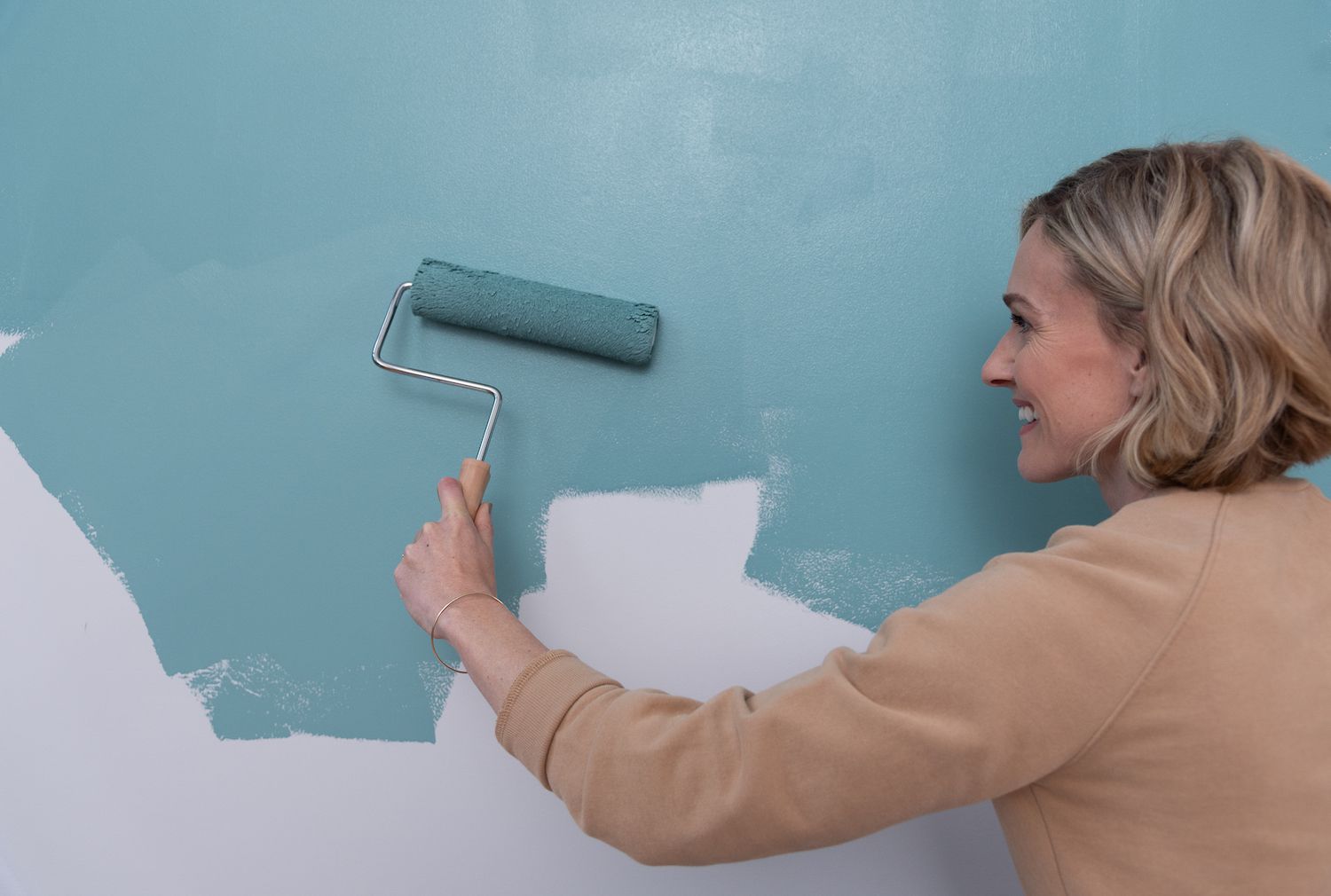When painting a wall, you want to get the job done as quickly and easily as possible. But when your tools just won’t cooperate, it can be incredibly frustrating. One thing that a lot of people find is that their roller doesn’t roll as much as it does slide. The clue is in the name, right? It should roll but there is a reason that you might be having problems. So, if you’ve been asking yourself why does my paint roller slide instead of roll, you’re in the right place.
The main reason that a roller slides and skids on the wall is that the surface is too smooth so the naps on the roller cannot grip properly, which would cause the roller to spin. It could also be related to how much paint you are using as well as how much pressure you are applying.
But some simple changes to how you use the roller can make life a lot easier and you will soon be painting your room without cursing your tools. Let’s take a closer look.
Reasons That Your Paint Roller Is Sliding
There are three main things that could cause your roller to slide instead of roll smoothly across the wall.
Too Much Paint
Primarily, it could be that you have overloaded the roller with too much paint. While this can be tempting in the belief that more paint equals less time spent working, it can be more of a hindrance. In this case, simply using less product will more than likely counteract the problem.
But also keep in mind that consistently overloading the roller will cause it to become saturated so you may need to clean it before it’ll perform as expected.
You’ll also notice that, when using too much paint, it will flick and splatter which makes a horrific mess. To avoid this, you can slightly dampen the roller before use as this will help it to better soak up any excess. Also don’t forget to use the ramp on your roller tray which is designed to help you remove excess product.
Problems With The Wall Surface
A lot of people would assume that a very smooth surface is the best for rolling as there aren’t any bumps or notches getting in the way. But this isn’t always the case. If the surface of the wall is too smooth, the roller will not be able to get a proper grip on it which will prevent it from turning.
Again, this is usually a problem when too much paint is applied so be sure to only apply a little at a time.
Applying Pressure
When you are using a roller, it’s super important to apply just the right amount of pressure. Applying too much or too little will affect how the roller moves. Generally speaking, light pressure is best and try to keep your strokes consistent. This way, you shouldn’t have too many problems.
It’s also a good idea to keep in mind that when you are painting, you will naturally put more pressure on the side of the roller where the handle is. This means that the other end will lift away from the wall slightly. This can cause problems with sliding but it is also a common way for the roller sleeve to slide off the frame.
Not only is this annoying but it can also be incredibly messy. When using a roller, it’s super important to practice a good technique for ease of use and the best results. If you find it difficult to adjust your grip and pressure, it might be worth using a roller on a pole as these are usually easier to apply even pressure to.
When Should You Change A Paint Roller?
Sometimes, it doesn’t matter what you do or how you use your tools, you just have to admit that the roller is no good.
Most professional painters would agree that using a roller for up to five cycles is best. After this, it may become worn and could potentially shed, leaving material in the paint; nobody wants that. Fortunately, paint rollers are relatively inexpensive so you won’t break the bank replacing yours.
Do I Need To Wash My Roller Between Coats?
If you want your roller to perform its best then you will need to keep it clean. Once you have applied the first coat of paint, take this opportunity to get rid of any excess paint and give your roller a good clean.
When you come to paint the second coat, the roller won’t be overloaded and you will therefore find it much easier to use.
This isn’t absolutely essential and many people will simply cover the roller with cling film or a plastic bag between coats. However, by removing excess paint at the very least, you’ll drastically improve the roller’s performance.
Recent Article: Why Do Painters Leave Rollers In Paint Cans
Conclusion
You want the very best finish for your paint work but sometimes your tools just won’t perform as you expect and this can lead to substandard work not to mention frustration. One of the most common problems is that the roller won’t roll but instead slides over the wall surface.
This could be for a number of reasons including applying an incorrect amount of pressure, overloading the roller with too much paint or painting on too smooth a surface. The good news is that these problems are typically very easy to overcome. But don’t forget that a roller doesn’t last forever and will need to be replaced around every five uses.

1 thought on “Why Does My Paint Roller Slide Instead Of Roll?”